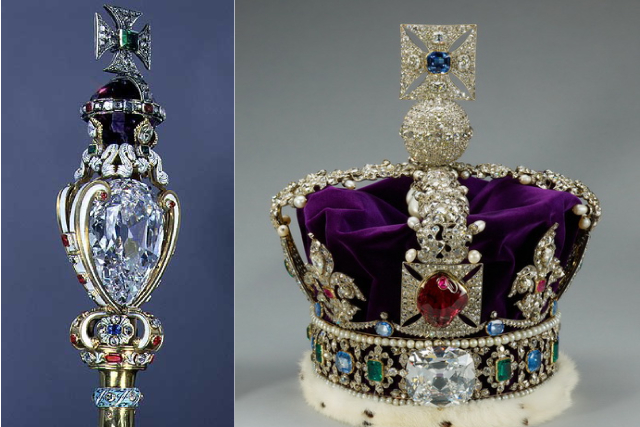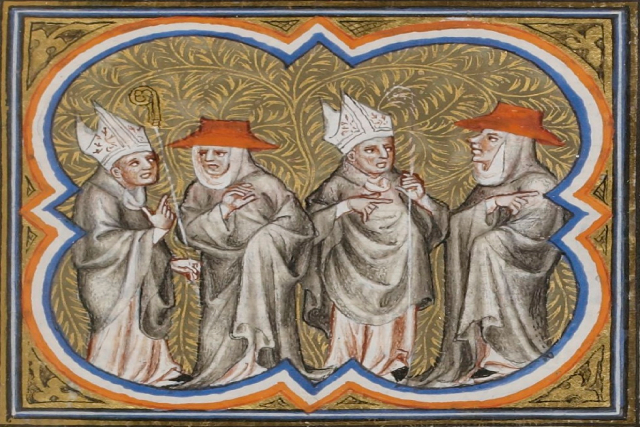On 30 October 1961, the Soviet Union detonated the Tsar Bomba nuclear bomb over the Novaya Zemlya archipelago in northern Russia.
To this day, this is the largest nuclear weapon detonated. The 27-tonne Soviet Tsar Bomba was the most powerful weapon ever constructed.
Officially named AN602 hydrogen bomb, it was originally intended to have a yield of 100 megatons, but this would have posed problems with the radioactive fallout.
Later, the Tsar Bomba was reduced to have a yield of only 50 megatons of TNT.
In an atmospheric test in 1961 it had a yield of 50 megatons – 3,300 times as powerful as the Hiroshima bomb and 1,400 times as powerful as the Hiroshima and Nagasaki nuclear bombs combined.
The bomb served no military purposes. For that, it would be too heavy to carry and there was no plane able to do intercontinental flights with such a load, the purpose of the bomb was more to intimidate.
The idea of creating a bomb of this power first appeared on July 10 1961 in a meeting between Khrushchev and the senior weapon designer, Andrei Sakharov. Initially, the bomb should have had a yield of 100 megatons, but this was changed in a later stage since a bomb that big would have posed serious safety issues and it would have affected inhabited parts of northern Soviet Union.
The development of the Tsar Bomba was rushed, since Nikita Khrushchev wanted the bomb to be detonated during the 22nd Congress of the Communist Party held between October 17 and October 31 1961. The development team consisting of Victor Adamskii, Yuri Babaev, Yuri Smirnov and Yuri Trutnev had little time to prepare the bomb so they rushed everything.
Assembly was carried out in parallel with designing. The design of the bomb posed serious questions. Its weight of 27 tons was two and a half times the Tu-95’s normal weapon loads and close to the plane’s total weight load. Since the Tsar Bomba was too big, the Tu-95 had to be slightly modified; the bomb doors had to be removed.
Also a custom parachute had to be built in order to slow the bomb’s descent so that the plane has enough time to get to a safe place.
Tsar Bomba Crater
The plane piloted by Andrei Durnovtsev dropped the Tsar Bomba at 11:32 AM Moscow time, from a height of 6.5 miles (10.5 km) over Mityushikha Bay in Novaya Zemlya, approximately at 73.85° N 54.50° E. The bomb detonated at a height of 2.5 miles (4 km). The descent from the height it was dropped from until the place of the detonation at 4,000 meters above ground took 188 seconds, just enough time for the pilot to fly to a safe distance. Just one second after the detonation, the fireball was already 4 miles wide, and the light could be seen at distances of over 2,000 kilometers. The mushroom raised to a height of about 64 km, over 7 times the height of Mount Everest.
After the explosion, the surface of the island was leveled, and the rocks melted. Some reports indicate that windows were broken in northern Finland and Norway too.
The crater created by the bomb has a diameter of 390 meters and its maximum depth is approximately 100 meters. Contrary to popular belief, due to the fact that the Tsar Bomba was detonated in the air, the crater is theoretically safe to visit.
What Was the Blast Radius of the Tsar Bomba
The mushroom cloud that formed had a diameter of around 40 km and the mushroom cloud that formed was 64 km high, 168 times higher than the Empire State Building.
As can be seen in the picture below, the blast radius of the Tsar Bomba, where everything was destroyed was around 40 miles or around 64 km while the severe destruction area was 60 miles or 96 km.
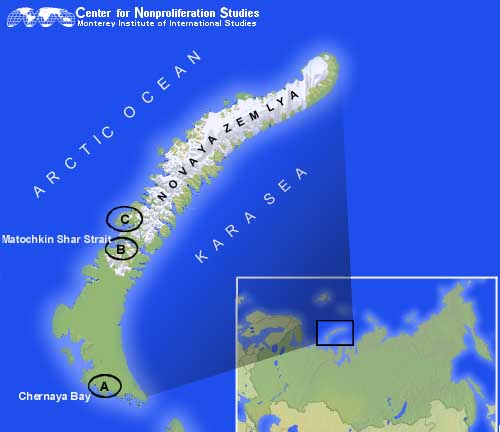
To better visualize what this means, below is a picture of the Tsar Bomba’s radius imposed over London. The inner circle is where the conflagration would take place and most people would die, while the outer circle is where people would suffer 1st degree burns.
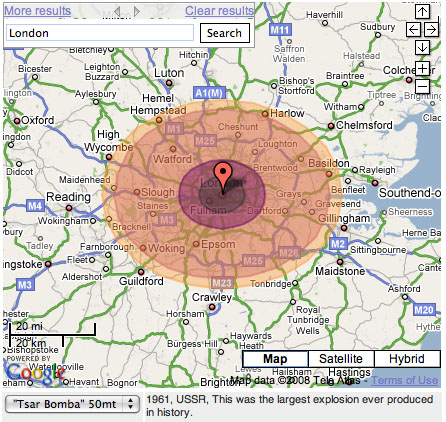
Tsar Bomba vs Fat Man
Fat Man, the first bomb ever detonated over the city of Nagasaki during World War II had a yield of 21 kilotons. Compared to that, the Tsar Bomba had a yield of 50 megatons or roughly 2,500 times higher than Fat Man.
In the picture below, you can visualize the fireball produced by the Tsar Bomba compared to other nuclear bombs including Little Boy (the bomb dropped over Hiroshima).
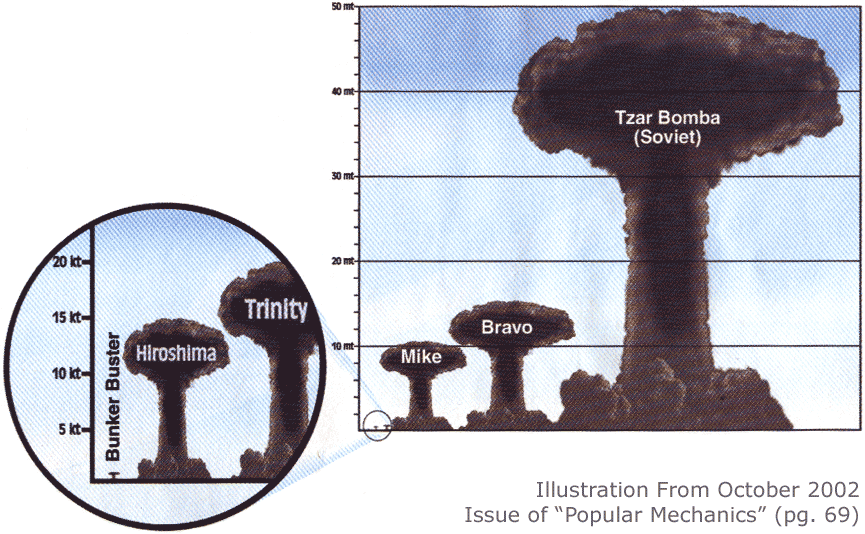
Footage of the Tsar Bomba
Surprisingly, there exists footage of the Tsar Bomba and you can watch the video of the detonation below.

